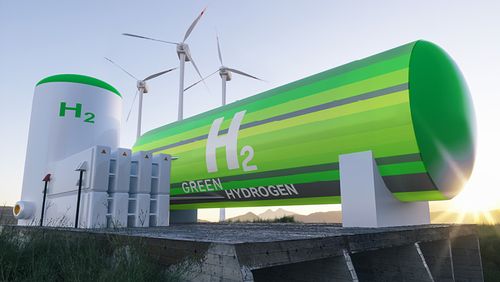The Alaska Gasline Development Corp. (AGDC) has submitted a concept paper for an Alaska Hydrogen Hub to the U.S. Department of Energy (DOE), according to a press release.
Organizations supporting the AGDC-led Alaska Hydrogen Hub include Agrium U.S., Salamatof Native Association, Alaska CCUS Consortium (including ASRC Energy Services, Santos, and Storegga), and the University of Alaska Fairbanks’ Alaska Center for Energy and Power.
Federal funding to create hydrogen hubs was included in the 2021 Bipartisan Infrastructure Law, passed with the support of Alaska’s Congressional Delegation and signed by President Biden, and is expected to be awarded in late 2023 or early 2024.
DOE envisions selecting six to ten hydrogen hubs and awarding up to $7bn in federal funding to support the production and delivery of clean hydrogen energy in support of U.S. emissions-reduction goals.
DOE guidelines require that successful projects will produce a minimum of 50 tons of hydrogen per day, and the Alaska Hydrogen Hub anticipates initially producing more than 600 tons per day, utilizing natural gas feedstock from the Alaska LNG Project and sequestering the associated carbon, eventually growing to 1,600 tons of hydrogen per day in hub capacity.
The Alaska LNG Project demonstrated through a comprehensive lifecycle analysis that it is the lowest carbon intensity LNG project in the U.S. The Alaska Hydrogen Hub will support hydrogen ecosystem growth over time from Alaska’s abundant renewable energy sources, including tidal, wind, hydro, and geothermal energy.DOE requires that applicants combine federal funding with project-specific funding.
The Alaska Hydrogen Hub concept anticipates using $850 million in DOE funding along with $3.75bn in private-sector funds, backed by offtake agreements from hydrogen customers in the U.S. and Asia.
Alaska has a number of advantages that make the region uniquely suited to host one of the new hydrogen hubs:
•Alaska’s North Slope is home to North America’s largest untapped source of natural gas, estimated at 200 trillion cubic feet, a key component for conventional hydrogen production. The AGDC-backed Alaska LNG Project plans to transport that gas across Alaska for in-state consumption, including hydrogen production, and conversion to LNG for export.
•The benefits of producing low-carbon intensity hydrogen from natural gas are realized when carbon released in the production process is captured and safely stored in underground geologic formations. Alaska’s Cook Inlet, in the center of the Alaska Hydrogen Hub, has an estimated 50 gigatons of carbon sequestration capacity, the best carbon sequestration potential on the West Coast, according to geologists.
•Existing energy infrastructure, including an idle ammonia plant owned by Agrium, is located next to the planned Alaska LNG Project LNG facility. Hydrogen in the form of conventional liquid ammonia emits no carbon dioxide when used to produce energy and is easier to store and transport than hydrogen gas.






